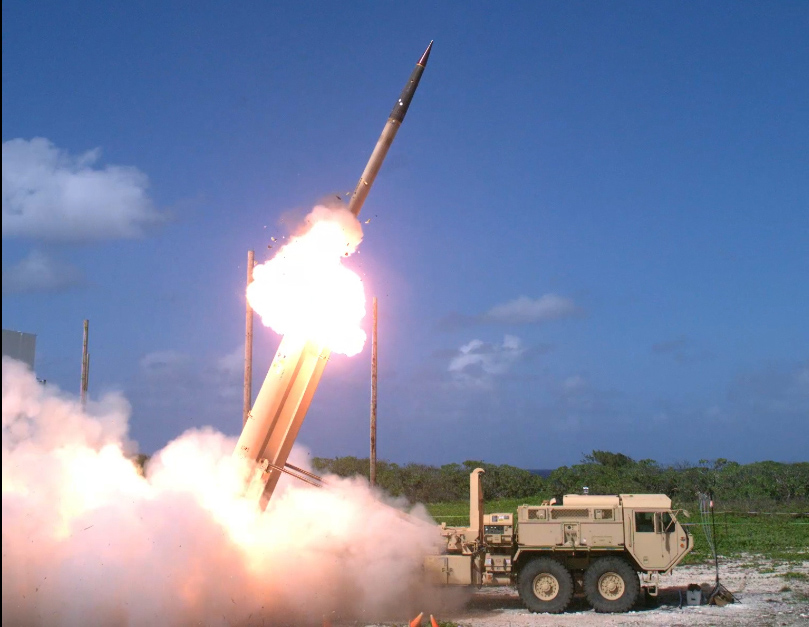A 12-day war with Iran, a mid-level power reeling under decades of crippling sanctions, is all it took to expose the glaring inadequacy of US missile defense stockpiles.
The worrying revelation exposes how the US air defense doctrine is still stuck in a Cold War mentality, which is ill-suited for modern warfare on a scale where countries have hundreds, even thousands, of ballistic missiles in their arsenal.
According to a new report, operating alongside the layered Israeli air defense systems, the US military burned through THAAD (Terminal High Altitude Area Defense) munitions at a furious pace during the Iran-Israel War in June.
The THAAD operators fired as many as 150 missiles during the 12-day war to shoot down waves of Iranian ballistic missiles, US defense officials told the Wall Street Journal.
Worryingly, this represents a quarter of all THAAD interceptors ever bought by the Pentagon, exposing the gaps in the US missile defense stockpiles.
“While Israeli officials credited the American systems for saving thousands of lives, the war revealed an alarming gap in U.S. supplies,” the report said.
The US military’s 2026 Fiscal Year budget request, released last month in June, revealed that the Missile Defense Agency (MDA) has received funding for 646 THAAD interceptors to date. However, the MDA has not received deliveries of all these missiles.
Furthermore, some of these missiles have been used by the US military for testing and training purposes.
U.S. Stockpiles Inadequate For Long War
The revelation also highlights how the US missile defense stockpiles were under tremendous pressure after just 12 days of war. A prolonged war could have compelled the US and Israel to divert interceptors intended for other countries or prioritize aerial threats, deliberately allowing certain missiles to skip through the missile defense architecture.
“The demand was so staggering that at one point, the Pentagon considered a plan to divert interceptors purchased by Saudi Arabia to the systems in Israel,” a US defense official told the WSJ.

This could have impacted the US relations with the Saudi kingdom, as Saudi cities and oil facilities were also considered at risk during the conflict.
Also, it was not just THAAD; the US ran through large numbers of shipborne interceptors as well, and Israel quickly drained stockpiles for its own systems.
US military officials are now openly acknowledging that the US missile defense stockpiles are simply inadequate for a world where “cheap, voluminous ballistic missiles have become the aerial weapon of choice.”
Notably, Iran launched 574 medium-range ballistic missiles at Israel during the June 13-24 war, according to JINSA’s Iran Projectile Tracker. Of these, 57 ballistic missiles were able to skip Israel’s multi-layered air defense architecture.
Furthermore, according to JINSA, this represented just one-third of Tehran’s ballistic missile stockpile. US adversaries like China and Russia have a much more expansive ballistic missile stockpile.
“We are at long last waking up to the need for massive defensive munitions procurement,” said Tom Karako, director of the missile defense project at the Centre for Strategic and International Studies.
Earlier in June, Vice Admiral Brad Cooper, soon to take charge as the head of the US Central Command, also flagged the lack of magazine depth in US missile defense stockpiles.
“I am concerned about everything, but one of the concerns would be munitions and magazine depth,” Cooper told the US Congress in June.
Limited THAAD Batteries
Another concern is the limited number of THAAD batteries available.
According to the US Congress, only eight THAAD batteries have been manufactured to date. Of these, only seven are currently operational.
Two THAAD batteries were forward-deployed to Israel during the war. Two batteries are committed on a long-term basis to Guam and South Korea. One battery is deployed in Saudi Arabia.
This means that currently, there are only two operational THAAD batteries available for deployment in the continental US.
“With five of the seven THAADs deployed, the US will likely run into ‘dwell’ issues where units don’t get needed downtime between deployments,” a US Army official told WSJ.
The US might also need additional THAAD batteries for Trump’s Golden Dome project.
“While Golden Dome’s precise architecture has yet to be determined, it is possible that THAAD could play a role in ground-based homeland missile defense, potentially requiring the creation of additional THAAD units,” according to the US Congressional Research Service (CRS).

Slow Production Rate: Years For Replishment
The US defense industrial complex, despite all its strengths, might take years and billions of dollars before it can fully replenish the THAAD interceptors fired during the 12-day war with Iran.
Each THAAD missile interceptor costs approximately $ 13 million, according to budget documents. So, replenishing 150 missile interceptors could cost nearly $2 billion.
Lockheed Martin, the manufacturer of the system, is in talks with the US government to increase production of THAAD interceptors to 100 per year. However, this might take years.
According to the JINSA study, it could take three to eight years to replenish the THAAD interceptor stockpile.
The Pentagon officials have sought to purchase 37 THAAD missile interceptors in fiscal year 2026.
This clearly shows that it will be years before the US can replenish the stocks it fired during the 12-day war with Iran.
Can The US Sustain Prolonged Wars?
The 12-day war with Iran, a regional power that has suffered through crippling Western sanctions for decades, has exposed glaring gaps in the US missile defense stockpile.
A limited 12-day engagement with a regional power compelled the US to think of diverting pre-committed supplies to regional allies like Saudi Arabia, and has left Washington with a depleted arsenal for years to come.
This has raised serious questions over the US’s ability to sustain a prolonged, intense war.
Notably, US adversaries like China, North Korea, and Russia have expansive ballistic missile arsenals. This concern is compounded by continued US support to Ukraine and growing apprehension over a potential conflict with China in the Indo-Pacific, where missile defense needs would be substantially higher.
Apparently, the US missile defense doctrine is still stuck in the Cold War mentality, where AD systems were meant to counter a limited barrage of high-end ballistic missiles or strategic bombers.
However, the production costs of ballistic missiles have decreased substantially, allowing even countries with limited resources to maintain a substantial ballistic missile stockpile. Even a militia group like the Houthis has a substantial missile stockpile.
The US missile defense doctrine must adapt to this new warfare doctrine, where the US must be able to sustain firing hundreds of missile interceptors for a prolonged period of conflict.
- Sumit Ahlawat has over a decade of experience in news media. He has worked with Press Trust of India, Times Now, Zee News, Economic Times, and Microsoft News. He holds a Master’s Degree in International Media and Modern History from the University of Sheffield, UK.
- VIEWS PERSONAL OF THE AUTHOR.
- He can be reached at ahlawat.sumit85 (at) gmail.com




